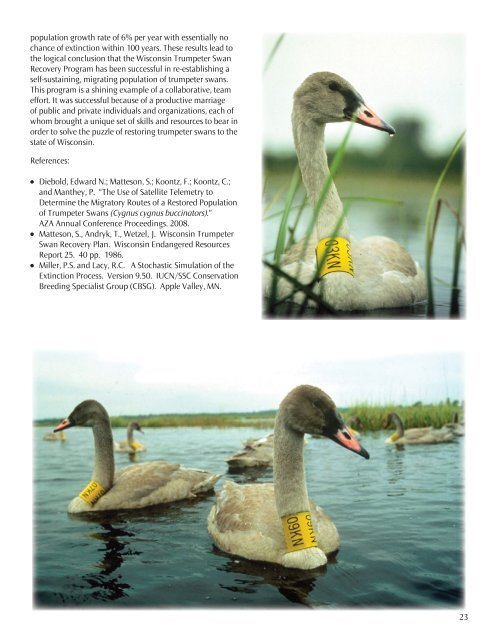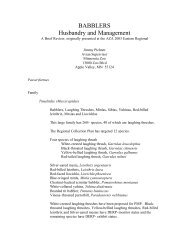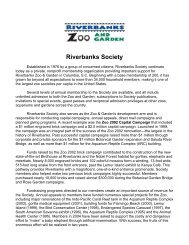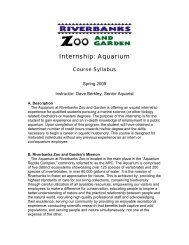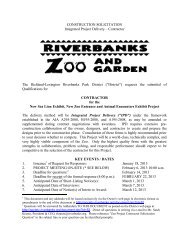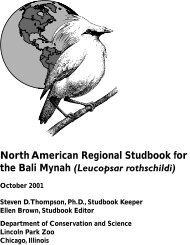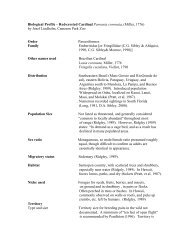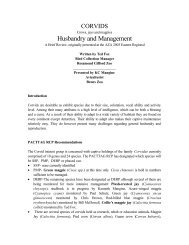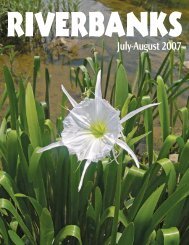Riverbanks Volume XXVIII, Number 3 - Riverbanks Zoo and Garden
Riverbanks Volume XXVIII, Number 3 - Riverbanks Zoo and Garden
Riverbanks Volume XXVIII, Number 3 - Riverbanks Zoo and Garden
You also want an ePaper? Increase the reach of your titles
YUMPU automatically turns print PDFs into web optimized ePapers that Google loves.
population growth rate of 6% per year with essentially no<br />
chance of extinction within 100 years. These results lead to<br />
the logical conclusion that the Wisconsin Trumpeter Swan<br />
Recovery Program has been successful in re-establishing a<br />
self-sustaining, migrating population of trumpeter swans.<br />
This program is a shining example of a collaborative, team<br />
effort. It was successful because of a productive marriage<br />
of public <strong>and</strong> private individuals <strong>and</strong> organizations, each of<br />
whom brought a unique set of skills <strong>and</strong> resources to bear in<br />
order to solve the puzzle of restoring trumpeter swans to the<br />
state of Wisconsin.<br />
References:<br />
Diebold, Edward N.; Matteson, S.; Koontz, F.; Koontz, C.;<br />
<strong>and</strong> Manthey, P. “The Use of Satellite Telemetry to<br />
Determine the Migratory Routes of a Restored Population<br />
of Trumpeter Swans (Cygnus cygnus buccinators).”<br />
AZA Annual Conference Proceedings. 2008.<br />
Matteson, S., Andryk, T., Wetzel, J. Wisconsin Trumpeter<br />
Swan Recovery Plan. Wisconsin Endangered Resources<br />
Report 25. 40 pp. 1986.<br />
Miller, P.S. <strong>and</strong> Lacy, R.C. A Stochastic Simulation of the<br />
Extinction Process. Version 9.50. IUCN/SSC Conservation<br />
Breeding Specialist Group (CBSG). Apple Valley, MN.<br />
23


